Abstract
1. N-Demethylation of pethidine was studied in microsomal suspensions from unstarved male rat liver and the N-demethylase identified as belonging to the class of hepatic microsomal mixed function oxidases.
2. A study of the structure/action relationships of compounds inhibiting pethidine N-demethylase revealed that hydrazine derivatives including phenylhydrazine, methylphenylhydrazine and mebanazine were all potent competitive inhibitors.
3. Pethidine N-demethylase was only slightly inhibited by histamine and amphetamine but not by adrenaline and ephedrine nor by several miscellaneous compounds including piperidine, N-ethylpiperidine, N-methylpiperidine, N-methylammonium, hydrallazine or pethidinic acid.
4. Several psychotropic drugs were all found to be potent competitive inhibitors of pethidine N-demethylase. These included monoaminoxidase inhibitors (the most active being nialamide and phenoxypropazine [Ki=0·01 mM]; the least active iproniazid [Ki=1·05 mM]); the tranquillizers promazine, propiomazine and chlorpromazine and tricyclic antidepressants (opipramol [Ki=0·01 mM], imipramine [Ki=0·03 mM], desipramine [Ki=0·03 mM] and amitryptyline [Ki=0·03 mM]). Hydrocortisone [Ki=0·3 mM], prednisolone [2·8 mM] and nalorphine [0·07 mM] were also inhibitors, whilst SKF 525A was the most active of all [Ki=0·002 mM].
5. These results are discussed in relation to the clinically observed drug interactions which may occur between monoamineoxidase inhibitors and pethidine. It is concluded that since many different groups of drugs, including monoamineoxidase inhibitors, tranquillizers, tricyclic antidepressants, steroids, nalorphine, SKF 525A and barbiturates compete for cytochrome P450 reductase, it is possible that this mechanism may account, at least in part, for the observed interactions of these various drugs in man.
Full text
PDF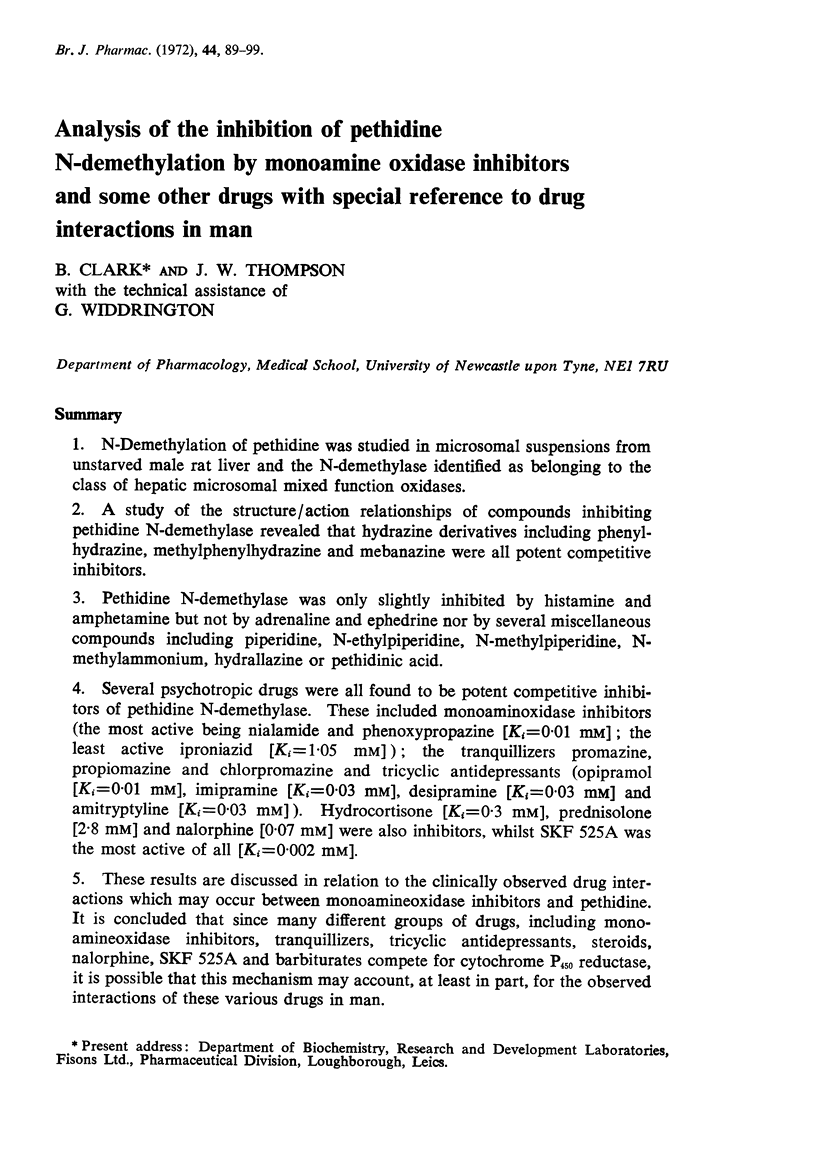
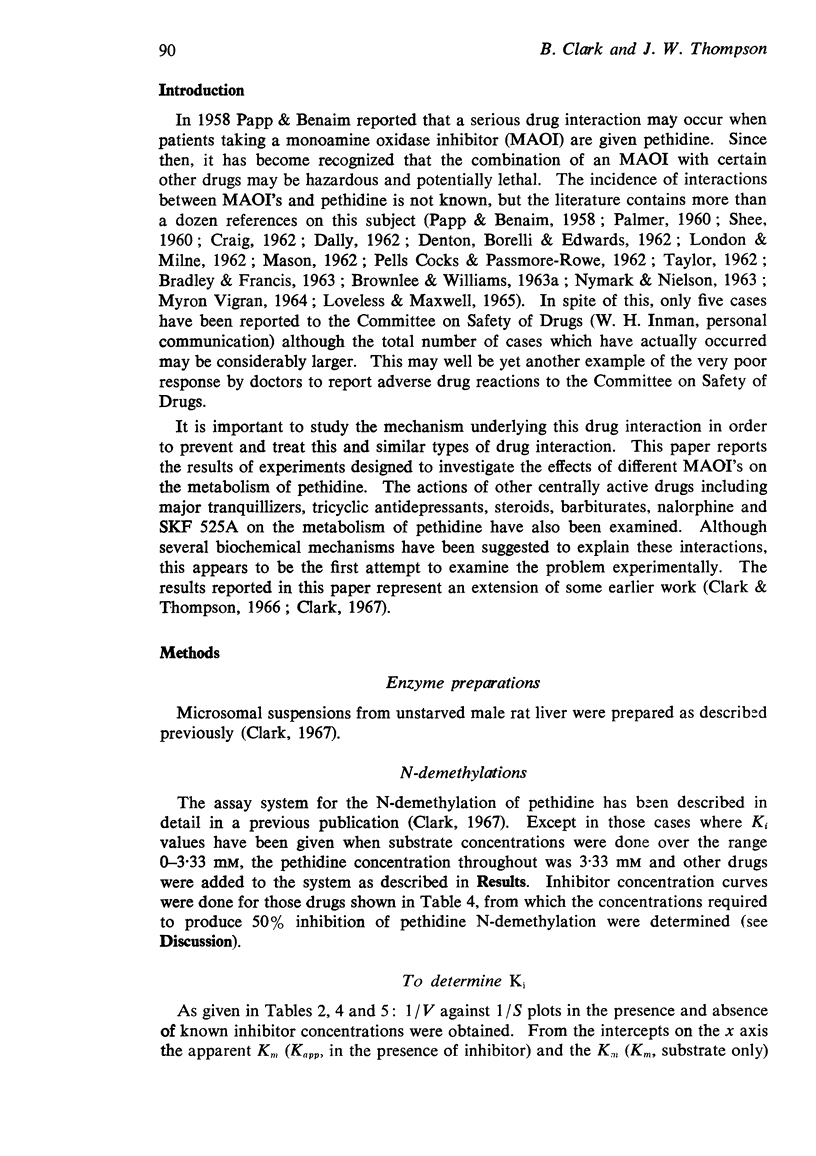
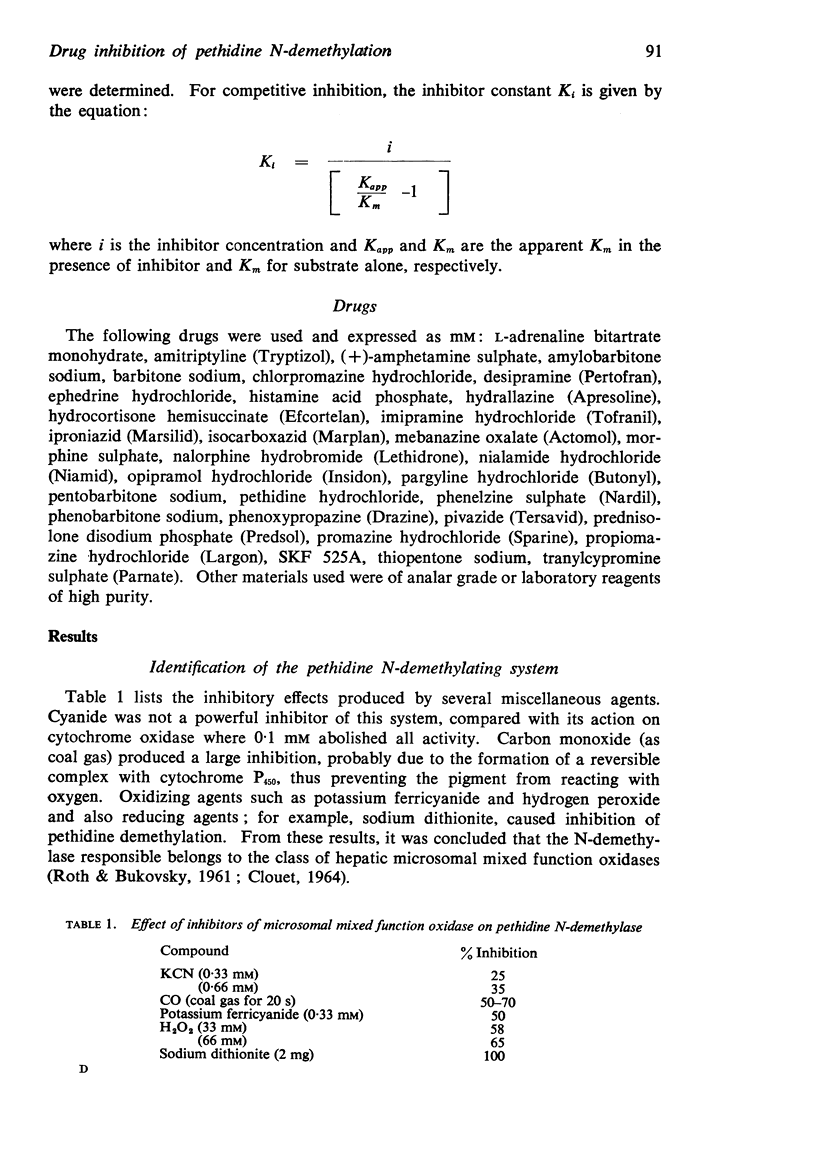
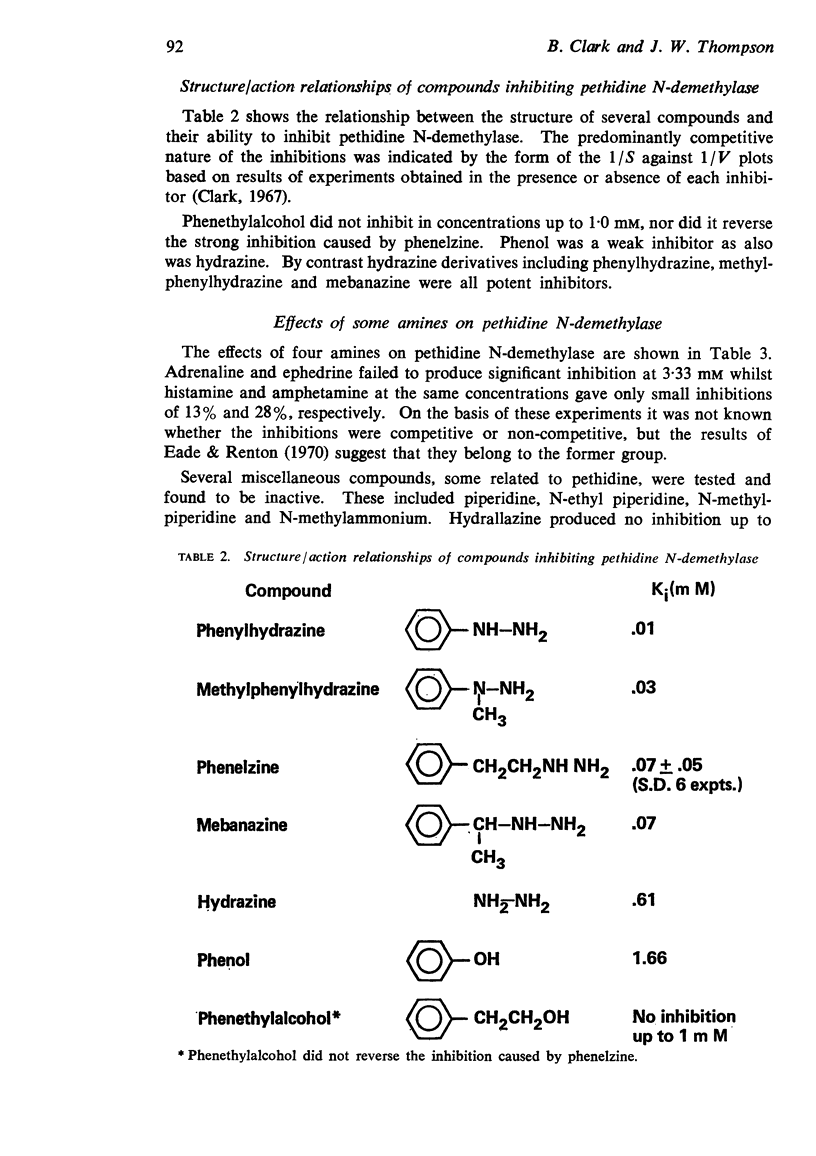
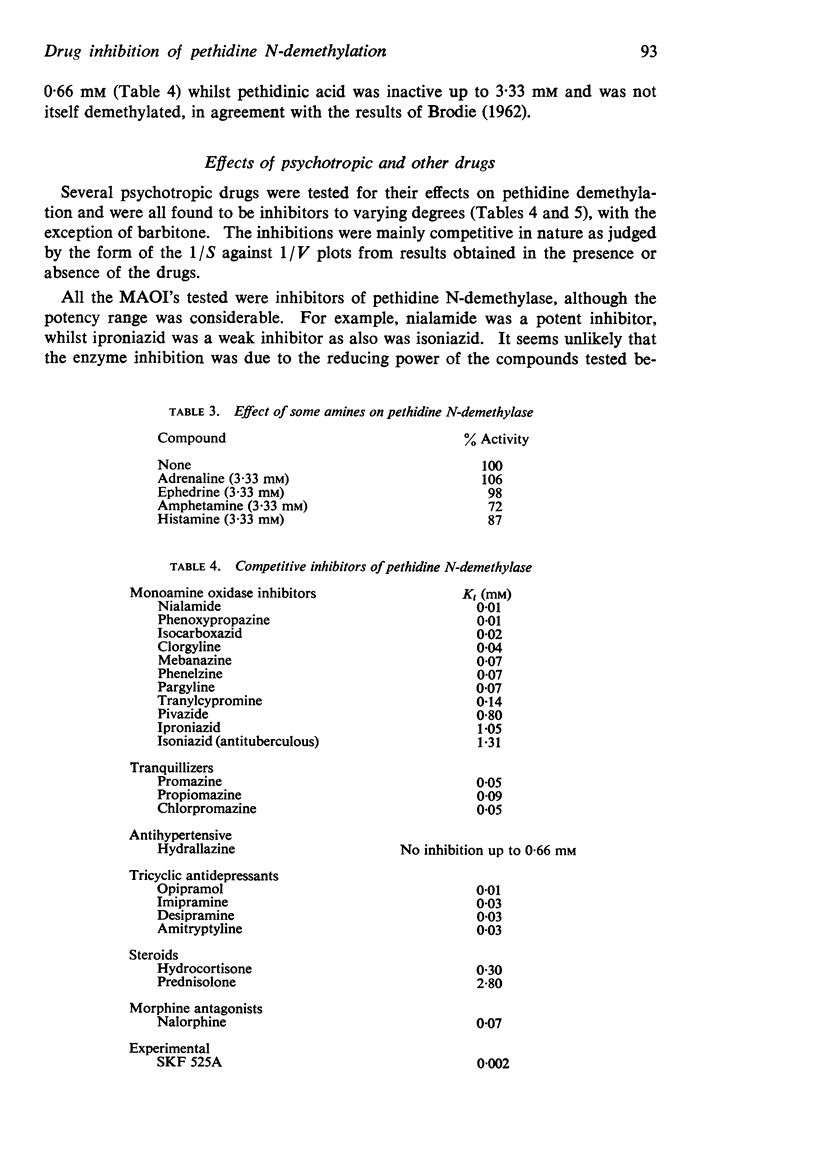
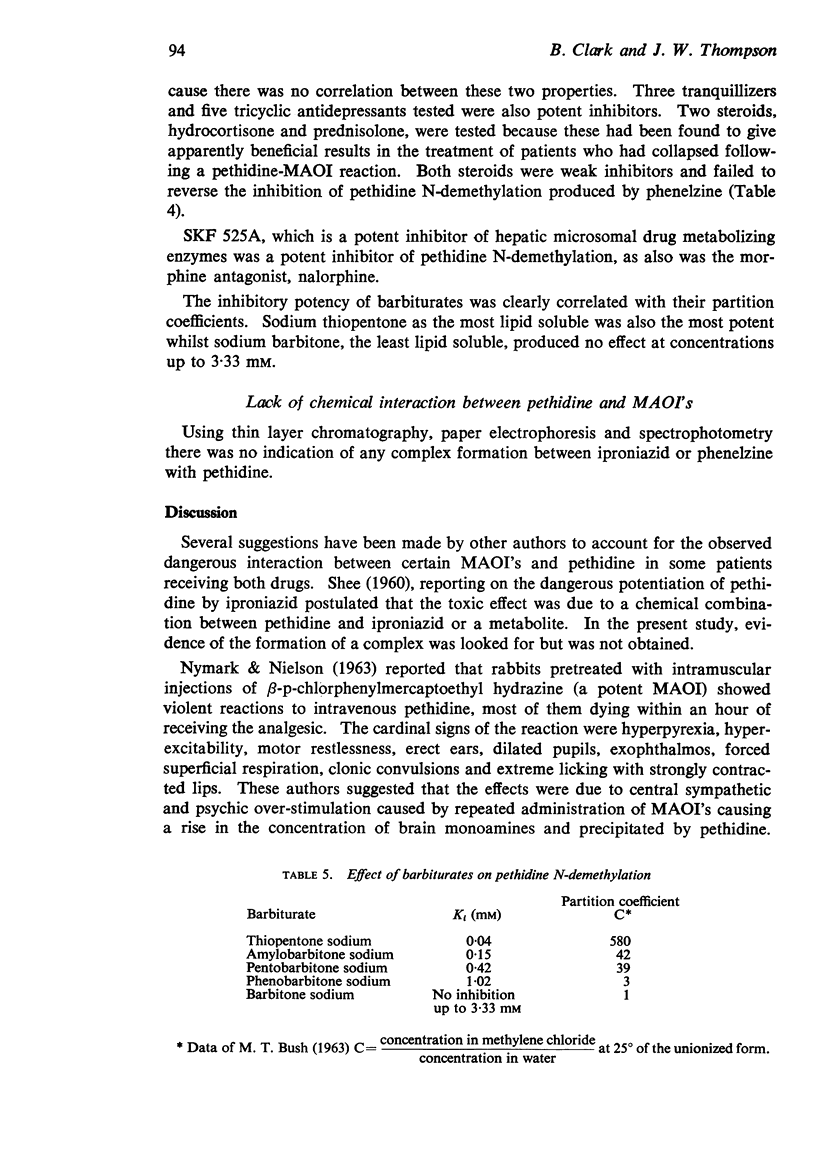
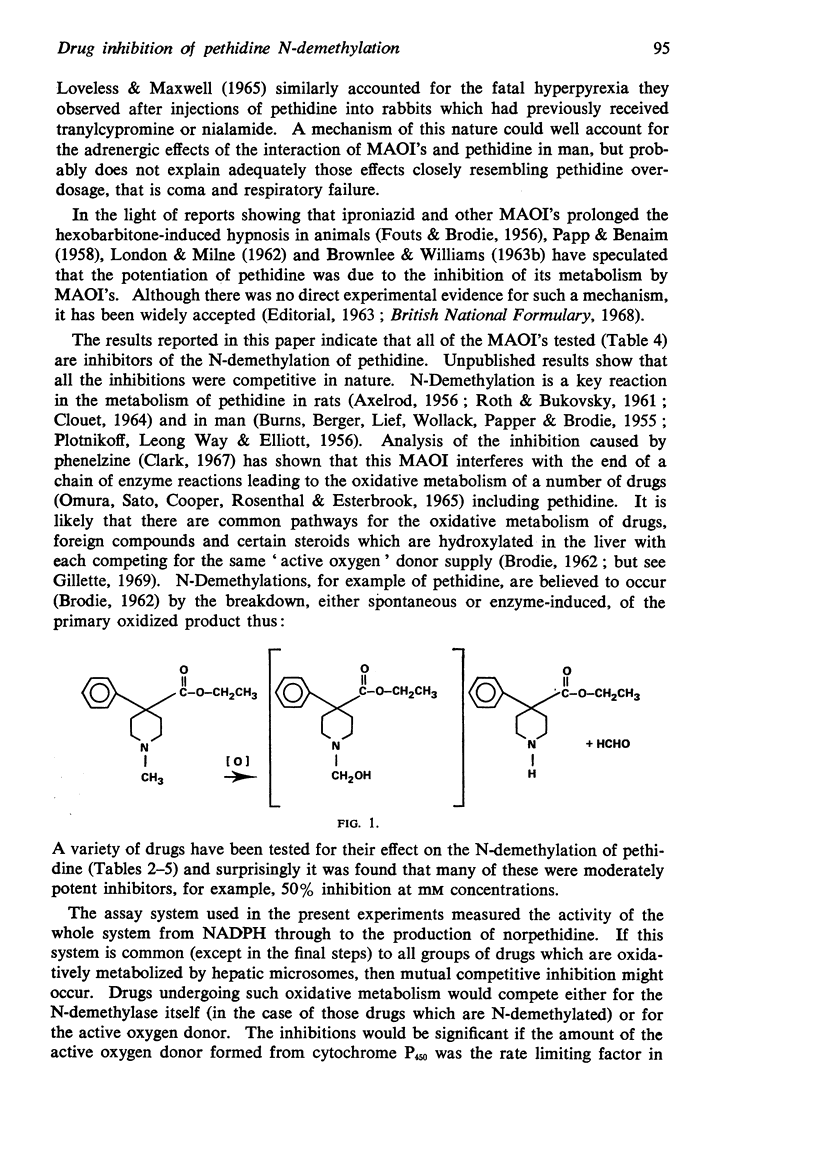
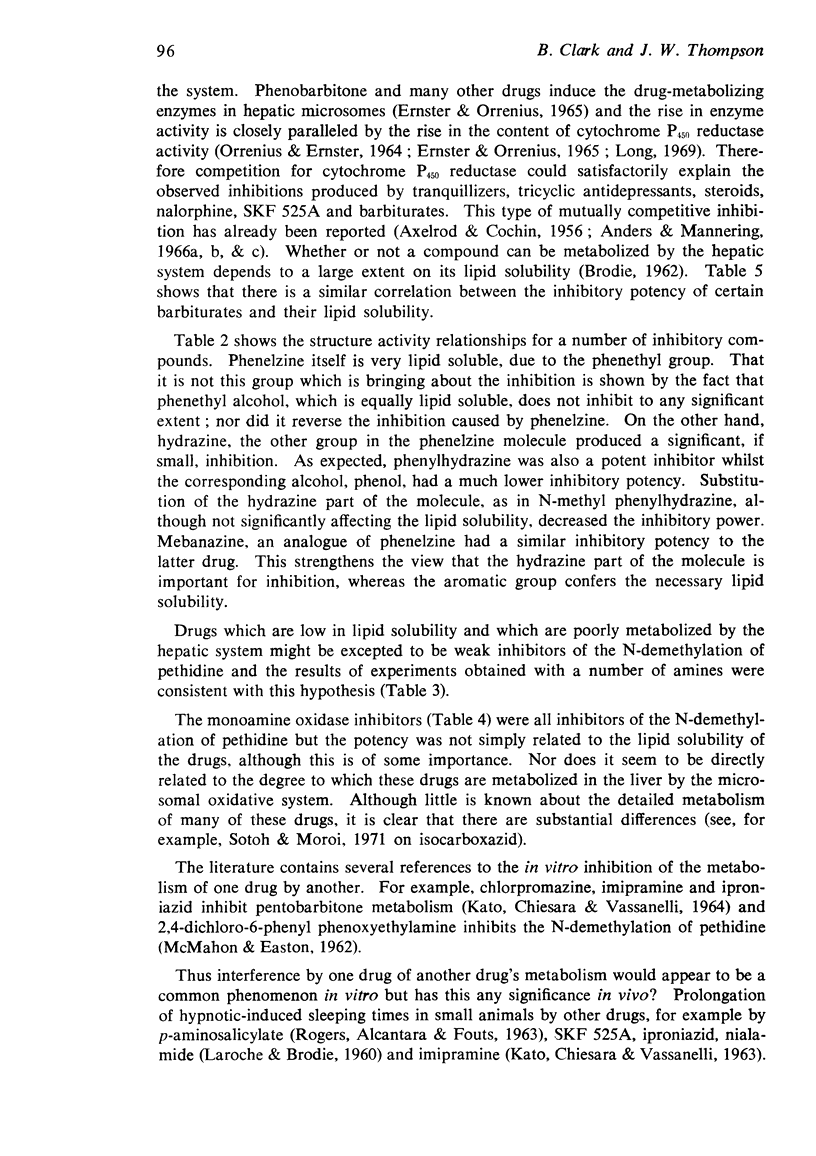

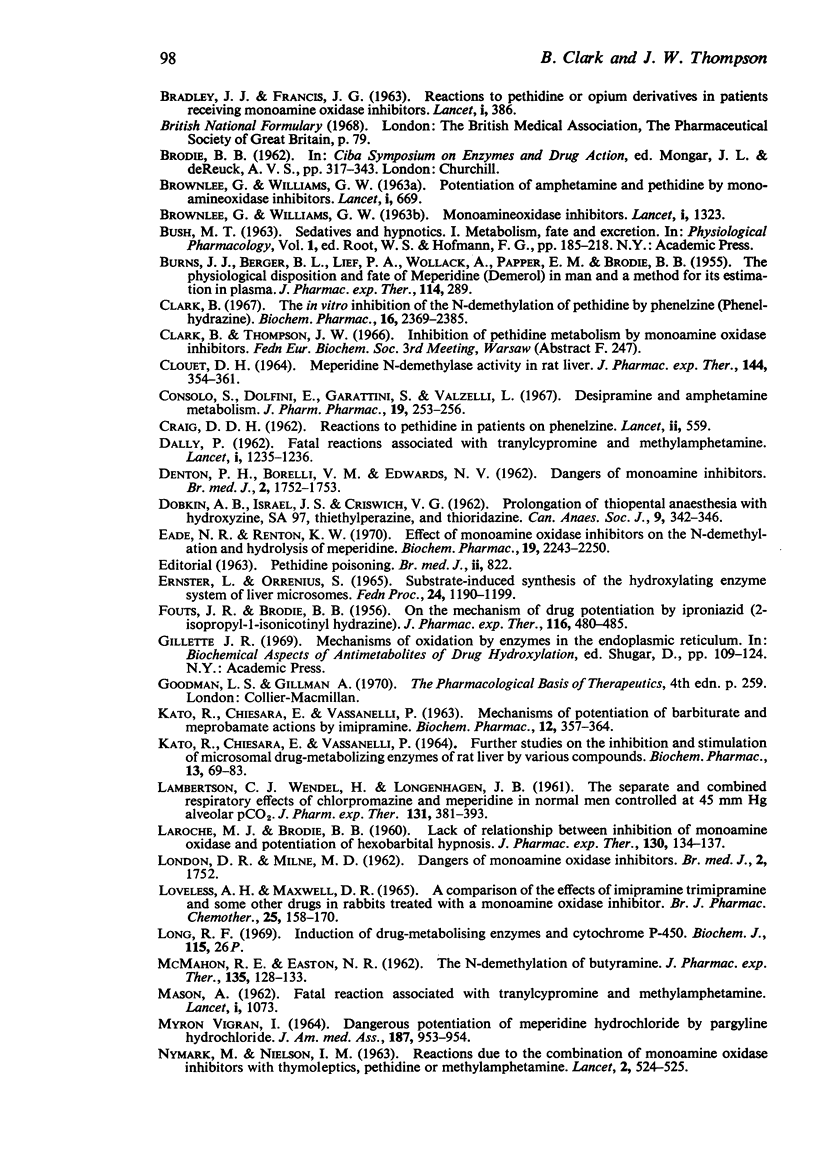
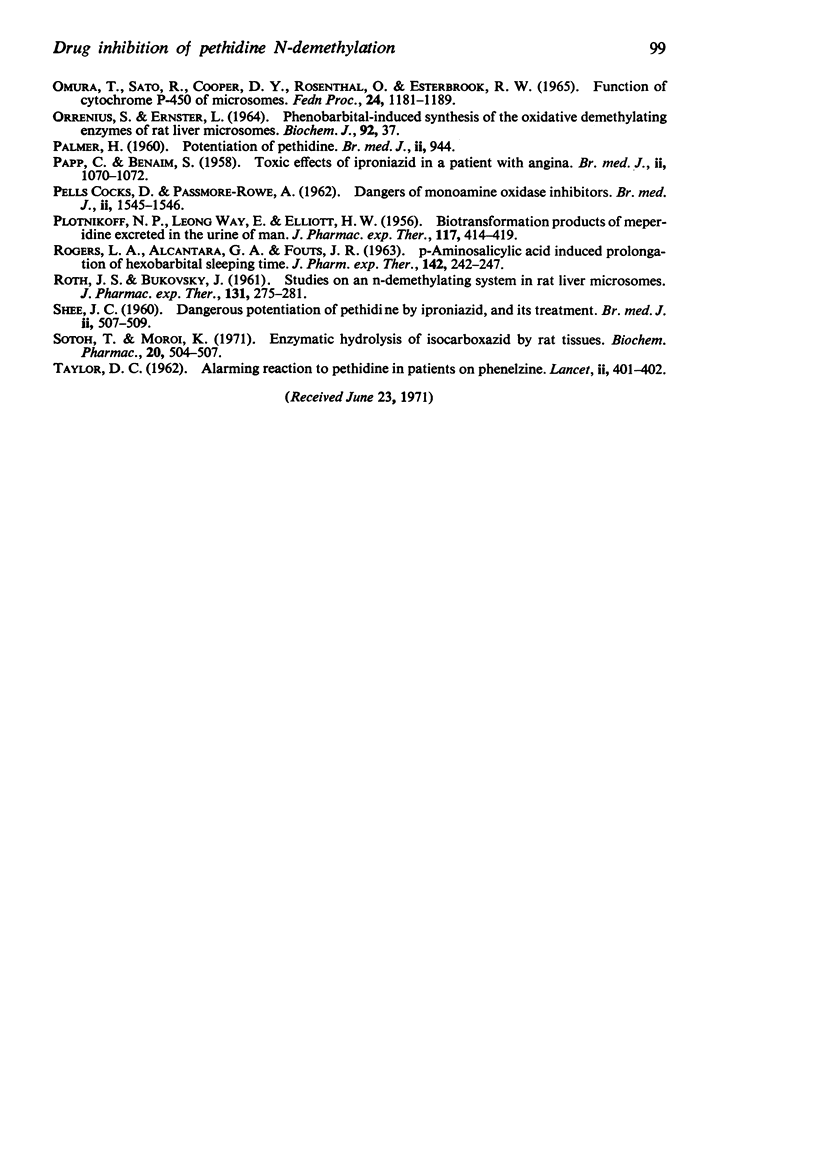
Selected References
These references are in PubMed. This may not be the complete list of references from this article.
- AXELROD J. The enzymatic N-demethylation of narcotic drugs. J Pharmacol Exp Ther. 1956 Jul;117(3):322–330. [PubMed] [Google Scholar]
- Anders M. W., Mannering G. J. Inhibition of drug metabolism. I. Kinetics of the inhibition of the N-demethylation of ethylmorphine by 2-diethylaminoethyl 2,2-diphenylvalerate HC1 (SKF 525-A) and related compounds. Mol Pharmacol. 1966 Jul;2(4):319–327. [PubMed] [Google Scholar]
- Anders M. W., Mannering G. J. Inhibition of drug metabolism. IV. Induction of drug metabolism by 2-diethylaminoethyl 2,2-diphenylvalerate HC1 (SKF 525-A) and 2,4-dichloro-6-phenylphenoxyethylamine HBr (Lilly 18947) and the effect of induction on the inhibitory properties of SKF 525-A type compounds. Mol Pharmacol. 1966 Jul;2(4):341–346. [PubMed] [Google Scholar]
- BROWNLEE G., WILLIAMS G. W. Potentiation of amphetamine and pethidine by monoamineoxidase inhibitors. Lancet. 1963 Mar 23;1(7282):669–669. doi: 10.1016/s0140-6736(63)91307-2. [DOI] [PubMed] [Google Scholar]
- BURNS J. J., BERGER B. L., LIEF P. A., WOLLACK A., PAPPER E. M., BRODIE B. B. The physiological disposition and fate of meperidine (demerol) in man and a method for its estimation in plasma. J Pharmacol Exp Ther. 1955 Jul;114(3):289–298. [PubMed] [Google Scholar]
- Clark B. The in vitro inhibition of the N-demethylation of pethidine by phenelzine (Phenethylhydrazine). Biochem Pharmacol. 1967 Dec;16(12):2369–2385. doi: 10.1016/0006-2952(67)90222-5. [DOI] [PubMed] [Google Scholar]
- Consolo S., Dolfini E., Garattini S., Valzelli L. Desipramine and amphetamine metabolism. J Pharm Pharmacol. 1967 Apr;19(4):253–256. doi: 10.1111/j.2042-7158.1967.tb08080.x. [DOI] [PubMed] [Google Scholar]
- Eade N. R., Renton K. W. Effect of monoamine oxidase inhibitors on the N-demethylation and hydrolysis of meperidine. Biochem Pharmacol. 1970 Jul;19(7):2243–2250. doi: 10.1016/0006-2952(70)90123-1. [DOI] [PubMed] [Google Scholar]
- Ernster L., Orrenius S. Substrate-induced synthesis of the hydroxylating enzyme system of liver microsomes. Fed Proc. 1965 Sep-Oct;24(5):1190–1199. [PubMed] [Google Scholar]
- FOUTS J. R., BRODIE B. B. On the mechanism of drug potentiation by iproniazid (2-isopropyl-1-isonicotinyl hydrazine). J Pharmacol Exp Ther. 1956 Apr;116(4):480–485. [PubMed] [Google Scholar]
- KATO R., CHIESARA E., VASSANELLI P. FURTHER STUDIES ON THE INHIBITION AND STIMULATION OF MICROSOMAL DRUG METABOLIZING ENZYMES OF RAT LIVER BY VARIOUS COMPOUNDS. Biochem Pharmacol. 1964 Jan;13:69–83. doi: 10.1016/0006-2952(64)90080-2. [DOI] [PubMed] [Google Scholar]
- LAMBERTSEN C. J., WENDEL H., LONGENHAGEN J. B. The separate and combined respiratory effects of chlorpromazine and meperidine in normal men controlled at 46 mm Hg alveolar pCO2. J Pharmacol Exp Ther. 1961 Mar;131:381–393. [PubMed] [Google Scholar]
- LAROCHE M. J., BRODIE B. B. Lack of relationship between inhibition of monoamine oxidase and potentiation of hexobarbital hypnosis. J Pharmacol Exp Ther. 1960 Oct;130:134–137. [PubMed] [Google Scholar]
- Long R. F. Induction of drug-metabolizing enzymes and cytochrome P-450. Biochem J. 1969 Dec;115(5):26P–26P. doi: 10.1042/bj1150026p. [DOI] [PMC free article] [PubMed] [Google Scholar]
- NYMARK M., NIELSEN I. M. REACTIONS DUE TO THE COMBINATION OF MONOAMINEOXIDASE INHIBITORS WITH THYMOLEPTICS, PETHIDINE, OR METHYLAMPHETAMINE. Lancet. 1963 Sep 7;2(7306):524–525. doi: 10.1016/s0140-6736(63)90265-4. [DOI] [PubMed] [Google Scholar]
- Omura T., Sato R., Cooper D. Y., Rosenthal O., Estabrook R. W. Function of cytochrome P-450 of microsomes. Fed Proc. 1965 Sep-Oct;24(5):1181–1189. [PubMed] [Google Scholar]
- PAPP C., BENAIM S. Toxic effects of iproniazid in a patient with angina. Br Med J. 1958 Nov 1;2(5104):1070–1072. doi: 10.1136/bmj.2.5104.1070. [DOI] [PMC free article] [PubMed] [Google Scholar]
- ROGERS L. A., ALCANTARA G. A., FOUTS J. R. P-AMINOSALICYLIC ACID INDUCED PROLONGATION OF HEXOBARBITAL SLEEPING TIME. J Pharmacol Exp Ther. 1963 Nov;142:242–247. [PubMed] [Google Scholar]
- ROTH J. S., BUKOVSKY J. Studies on an N-demethylating system in rat liver microsomes. J Pharmacol Exp Ther. 1961 Mar;131:275–281. [PubMed] [Google Scholar]
- SHEE J. C. Dangerous potentiation of pethidine by iproniazid, and its treatment. Br Med J. 1960 Aug 13;2(5197):507–509. doi: 10.1136/bmj.2.5197.507. [DOI] [PMC free article] [PubMed] [Google Scholar]
- Satoh T., Moroi K. Enzymatic hydrolysis of isocarboxazid by rat tissues. Biochem Pharmacol. 1971 Feb;20(2):504–507. doi: 10.1016/0006-2952(71)90093-1. [DOI] [PubMed] [Google Scholar]
- VIGRAN I. M. DANGEROUS POTENTIATION OF MEPERIDINE HYDROCHLORIDE BY PARGYLINE HYDROCHLORIDE. JAMA. 1964 Mar 21;187:953–954. doi: 10.1001/jama.1964.03060250071021. [DOI] [PubMed] [Google Scholar]


